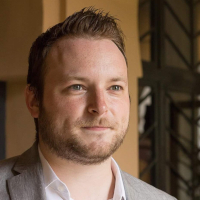Nearly a decade after it began, the era of Chechen and other North Caucasian jihadi fighters in Syria appears to be reaching its end. That, at least, is the appearance from the ongoing manhunt by the hardline Ha’yat Tahrir Al-Sham (HTS) jihadi group for Murad Iraklievich Margoshvili, more usually known by his nom de guerre, Muslim Al-Shishani, by all indications the last remaining independent Chechen commander in Syria’s rebel-held Idlib province.
On July 2, Al-Shishani announced that he had recently held a meeting with HTS officials. At that meeting, HTS demanded that Al-Shishani disband his group, Junud Al-Sham, and immediately depart from Idlib. In his statement, Al-Shishani said that he “could not understand” why his group had been targeted in this manner, given that they had never participated in any inter-rebel group fighting and had worked alongside many rebel groups against the forces of Syrian president Bashar Al-Assad.
Nevertheless, HTS was not deterred: the group gave him an ultimatum, and when it passed without action, began an active manhunt for Al-Shishani and his group. At the time of writing, the situation was still in a tense stalemate, with Al-Shishani and his men still in hiding somewhere in Idlib as HTS patrols searched for and attempted to expel them.
The end of this saga already is all but certain, as HTS’s resources dwarf those of Al-Shishani’s. The latter has stated that he will never turn his guns on fellow rebels no matter the circumstances. The disbanding of Junud Al-Sham itself is not of particular consequence, either: the group numbers only a few hundred fighters, and like many rebel groups has largely been dormant in recent years. It is more symbolic for what it represents: the ultimate end of independent Chechen and North Caucasian Islamist groups in Syria.

Since foreign fighters began flowing into Syria to join the insurgency against Al-Assad shortly after it erupted in 2011, Chechen fighters have occupied a near-mythical niche among rebel ranks. Known for their long independence struggle against Russia – one stage of which saw Chechen fighters, despite being outnumbered many times over by the Russian army, score a stunning victory in the First Chechen War – the Chechens’ reputation preceded them. Their image as battle-hardened commandos with otherworldly dedication and bravery, able to defeat forces many times their size through tenacity and skill, made them a sought after commodity for rebel groups as they arrived in Syria from the still-raging insurgency in Chechnya.
The first Chechen group in Syria, Katibat Al-Muhajireen, was founded in the summer of 2012 by undoubtedly the most infamous of Chechen commanders in Syria, Umar Al-Shishani, who would go on to become ISIS’s “minister of war” and third-in-command the next year. Umar Al-Shishani became an inspirational figure for Chechen and other North Caucasian fighters in Syria, rallying many of them with him as he led ISIS’s assault on the Kurdish town of Kobane in late 2014 and numerous other battles. Many other Chechen fighters joined Jabhat Al-Nusra, the precursor of HTS that became one of the main adversaries of ISIS. At their peak, Chechen and North Caucasian fighters in Syria numbered perhaps 4,000.
But Chechen fighters also formed their own groups, with a key caveat that set them apart from other rebel factions: they refused to take sides in the rebel-ISIS fighting and remained instead focused on combating the Assad regime. These “third way” jihadi groups were led by Muslim Al-Shishani’s Junud Al-Sham and Ajnad Al-Kavkaz, a sizeable faction headed by one Abdulhakim Shishani. Both these groups proved devastatingly effective on the battlefield, spearheading the 2015 Idlib campaign that saw the capture of the provincial capital before steadily rolling up regime positions in the direction of Syria’s coast, an event that directly prompted Russia’s military intervention in September of that year.
In the years since, these groups, like most other rebel factions, have found themselves listless as the military tide turned against them. Junud Al-Sham and Ajnad Al-Kavkaz both participated heavily in the lost 2016 battle of Aleppo, which decisively turned the war against the rebels. They have participated in the occasional skirmishes since, but little else. Ajnad Al-Kavkaz announced in late 2017 that it was suspending its military activities, and little has been heard from it since. Muslim Al-Shishani’s group has remained theoretically active, but has largely been idling in Idlib for the past four years.
And their independent bent is precisely what made them a necessary target for HTS at the present time. Under pressure from Turkey (themselves facing pressure from Russia), HTS has adopted the decision to forcibly disband all remaining non-Syrian groups in Idlib. As Ankara seeks to demonstrate to Moscow that it can indeed control the situation in the rebel enclave, those few remaining Chechen groups – always a bugbear for the Kremlin, which spent nearly two decades crushing them in the North Caucasus itself – were an obvious target.
For Muslim Al-Shishani, his fate is likely to be the same as that of so many other Chechen commanders: either death on the battlefield in a last stand, or a quiet exile somewhere in Turkey, perhaps in one of Istanbul’s distant North Caucasian-populated suburbs. Either way, it will mark the end of an era. The Chechen cadres of Syria, once a force to be reckoned with, are soon to be no more.
By Neil Hauer

Neil Hauer is a security analyst based in Tbilisi, Georgia. His work focuses on the Syrian conflict, particularly Russia’s role; politics and minorities in the South Caucasus; and violence and politics in the North Caucasus, particularly Chechnya and Ingushetia, where he conducts regular fieldwork. He previously served as senior intelligence analyst at The SecDev Group in Ottawa, Canada. He has consulted for the European Union and the Organization for Security and Cooperation in Europe (OSCE) on radicalization and security.
Syndication Bureau for Telegraf

:format(webp):no_upscale()/cdn.vox-cdn.com/uploads/chorus_asset/file/2517994/91373973.0.jpg)



